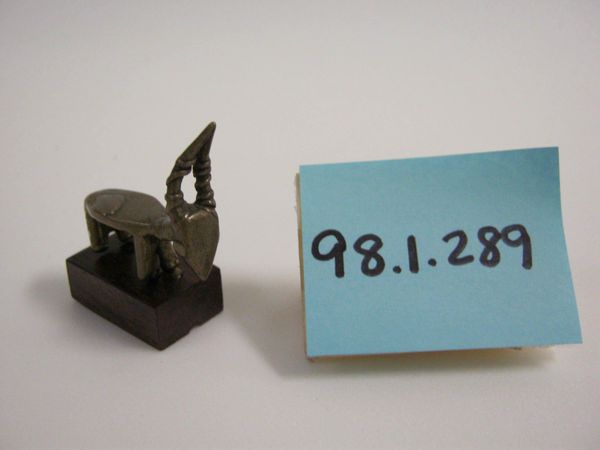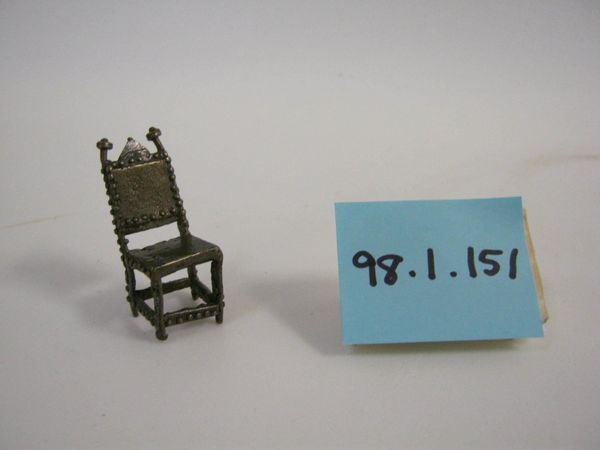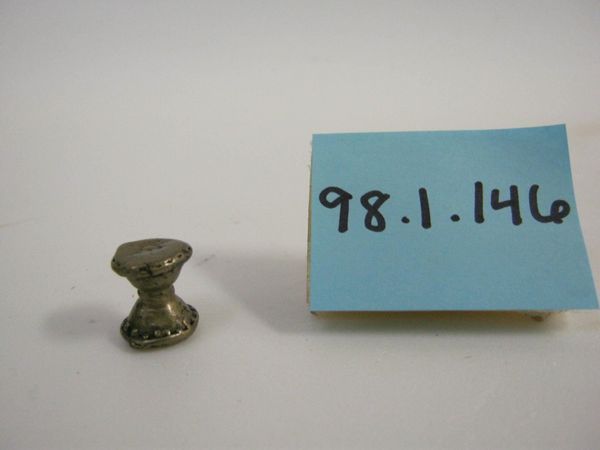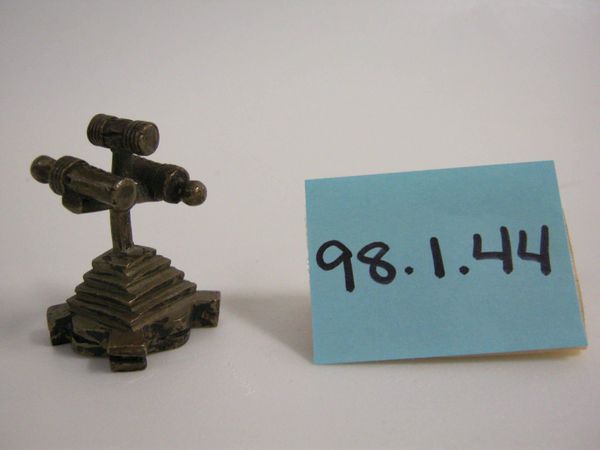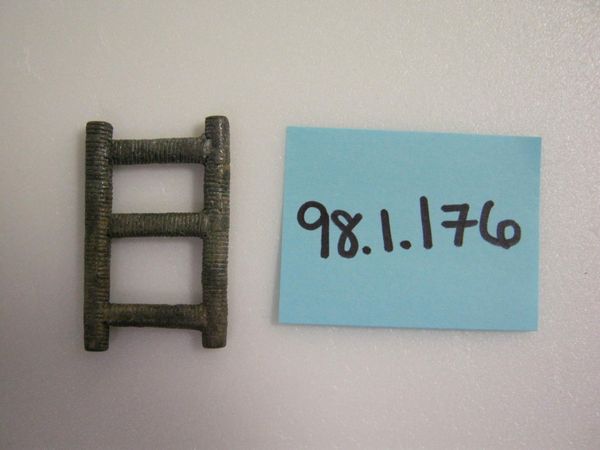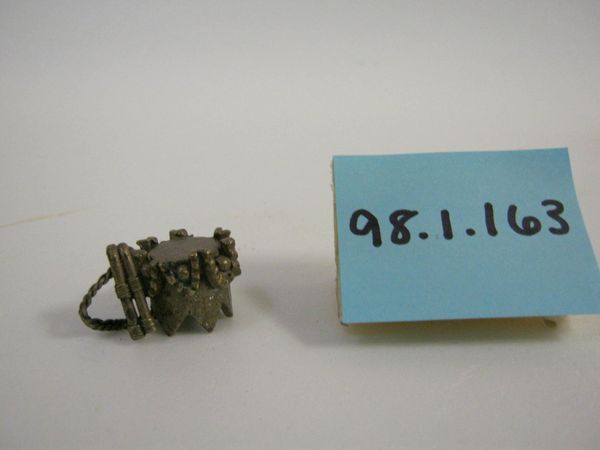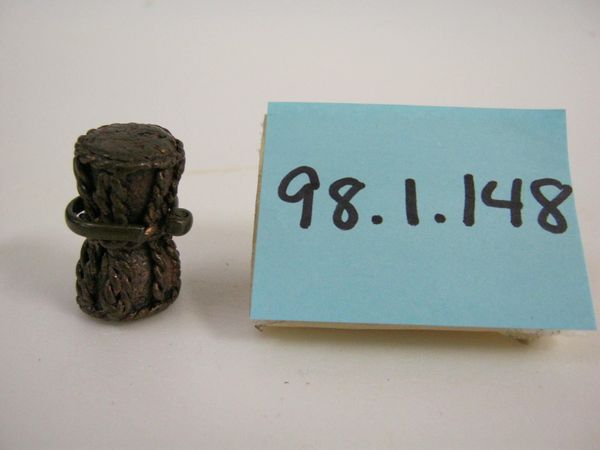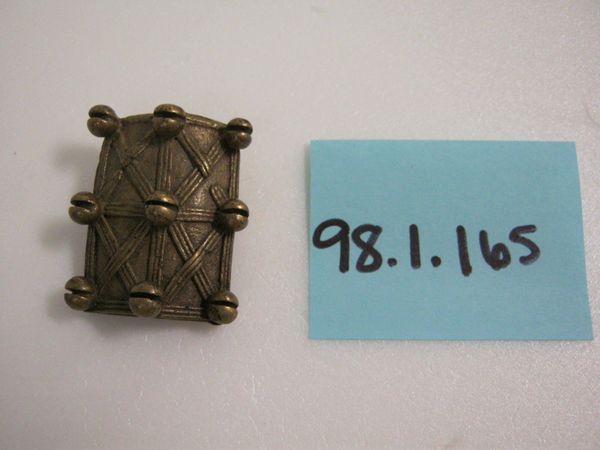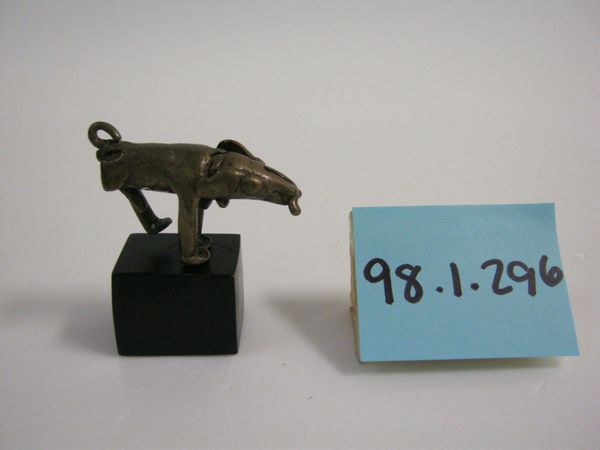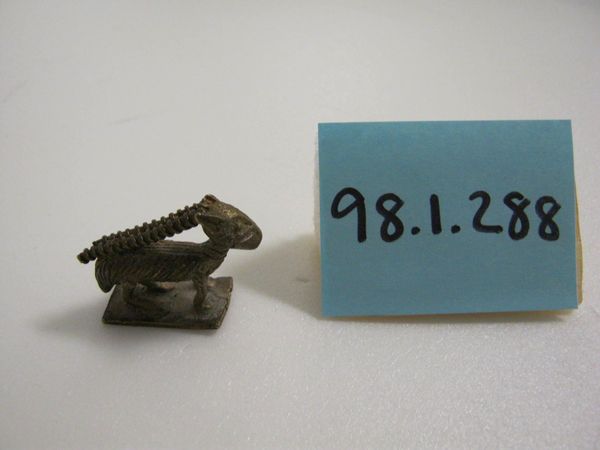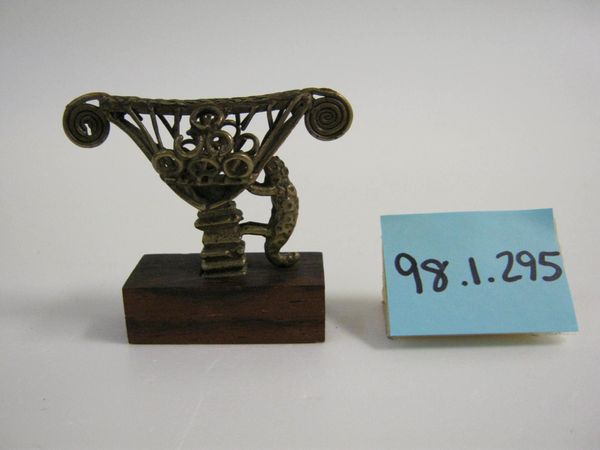![Goldweight [Stool] by Akan](/_next/image?url=https%3A%2F%2Fd2w8kbdekdi1gv.cloudfront.net%2FeyJidWNrZXQiOiAiYXJ0ZXJhLWltYWdlcy1idWNrZXQiLCAia2V5IjogImFydHdvcmtzLzUyM2ZmYTBjLWEyNjEtNGQwZi1hYTNlLWQ2OTYwOWQ5Y2NkZi81MjNmZmEwYy1hMjYxLTRkMGYtYWEzZS1kNjk2MDlkOWNjZGZfZnVsbC5qcGciLCAiZWRpdHMiOiB7InJlc2l6ZSI6IHsid2lkdGgiOiAxOTIwLCAiaGVpZ2h0IjogMTkyMCwgImZpdCI6ICJpbnNpZGUifX19&w=3840&q=75)
brass, sculpture
#
african-art
#
brass
#
sculpture
Dimensions: 1 3/16 x 1 5/16 x 13/16 in. (3.02 x 3.33 x 2.06 cm)
Copyright: Public Domain
This diminutive stool was created by the Akan people, but its date of creation is unknown. Although small in scale, the bronze sculpture presents a surprising monumentality through its architectural form. Notice how the stool is structured: its rectangular base, the vertical columns, and the curved seat. These elements create a sense of balance and symmetry. The use of bronze adds a tactile quality, inviting close inspection of its surface. The stool operates as a signifier of wealth and status in Akan culture. By using a semiotic lens, the stool's design elements, such as the ornate columns, can be viewed as cultural codes. The visual language of the stool represents more than its function; it embodies complex social and economic structures. The artist transforms a utilitarian object into a potent symbol, questioning conventional assumptions about value and prestige. Reflect on how the stool's formal qualities intersect with its cultural significance. The scale, design, and material reflect broader artistic and philosophical concerns about art, function, and representation.
Comments
No comments
Be the first to comment and join the conversation on the ultimate creative platform.
